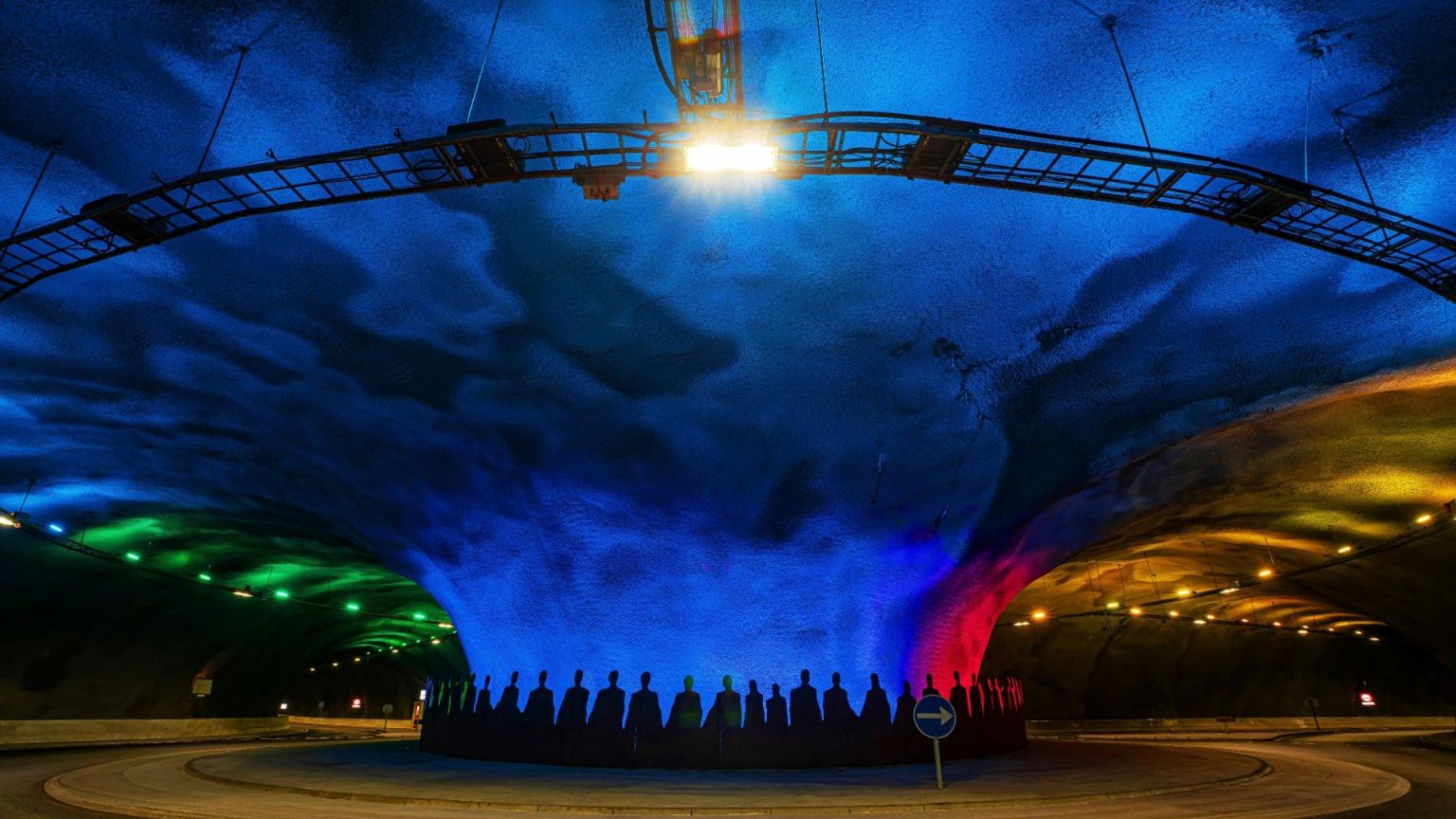The Faroe Islands, an archipelago nestled between Scotland and Iceland, have long been known for their interconnected network of tunnels facilitating travel between the 18 islands. However, a recent addition to this infrastructure has transformed from a mere transportation route into a captivating tourist destination. The Eysturoyartunnil, the world’s first subsea roundabout, has garnered significant attention since its opening in 2020. Located 72 meters beneath the surface, this unique roundabout connects the two most populous islands, Streymoy and Eysturoy, offering a 15-minute drive embellished with an artistic spectacle.
The roundabout’s central pillar, bathed in a deep blue hue and illuminated by a ring of overhead lights, serves as the canvas for a mesmerizing art installation. An 80-meter steel sculpture, affectionately dubbed the “Jellyfish,” encircles the pillar. The sculpture portrays figures holding hands, their faces oriented towards the light, symbolizing the Faroese spirit of collaboration and collective achievement. This artistic marvel, created by Faroese artist Tróndur Patursson, represents a journey from darkness to light, a powerful metaphor that resonates with visitors.
The Eysturoyartunnil and its artistic centerpiece have become iconic landmarks, drawing comparisons to renowned global attractions like the Eiffel Tower and Big Ben. Tourists are captivated by the underwater spectacle, often driving through the tunnel multiple times to fully appreciate the artistry and engineering marvel. The roundabout’s allure has elevated it beyond a mere transportation hub, transforming it into a must-see destination for those exploring the Faroe Islands.
The Eysturoyartunnil, a four-year construction project undertaken by Eystur- og Sandoyartunlar, a Faroese public limited company, required a substantial investment of €260 million (£215). While the toll fees for non-subscribers are 175 DKK (€24) each way, making multiple passes a costly endeavor for tourists, the visual splendor of the roundabout arguably justifies the expense for many. The availability of direct flights from major UK cities like Edinburgh and London, with return fares starting from £200, further enhances the accessibility of this unique attraction.
Beyond the subsea roundabout, the Faroe Islands present a rich tapestry of natural beauty and tranquil landscapes, offering respite from the hustle and bustle of urban life. The islands boast a network of bridges and tunnels connecting all 18 islands, providing ample opportunities for exploration. Hiking trails cater to all levels of experience, from short rambles between towns to challenging all-day treks leading to breathtaking panoramic vistas. One popular hike connects Tórshavn, the capital, to Kirkjubøur, one of the oldest towns in the Faroe Islands, dating back to the 13th century.
The Faroese landscape is characterized by dramatic gorges, majestic mountains, and captivating fjords. The islands are home to a diverse avian population, including the oystercatcher, the national bird of the Faroe Islands. While puffins are a highly anticipated sight, their arrival is seasonal, typically later in the year. Visitors at other times can still enjoy the presence of other seabirds, like fulmars, enhancing the natural beauty of the islands.
In essence, the Faroe Islands offer a unique blend of natural splendor and human ingenuity. The Eysturoyartunnil, with its captivating underwater roundabout, stands as a testament to both, transforming a functional infrastructure project into an artistic masterpiece and a prime tourist attraction. Coupled with the islands’ stunning landscapes and rich biodiversity, the Faroe Islands present a compelling destination for travelers seeking a refreshing escape in a truly remarkable setting.


